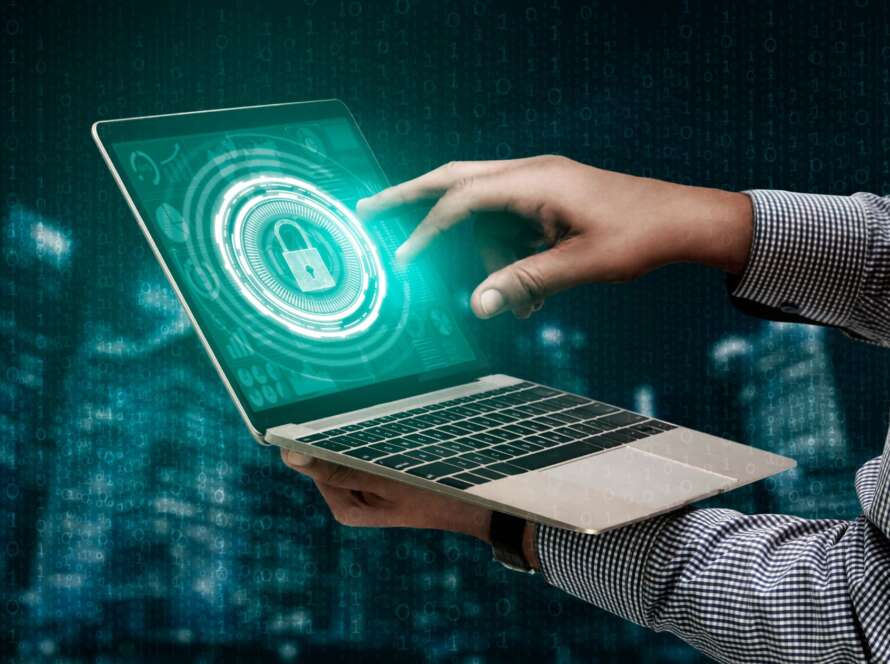Abstract
Business travel is very important for companies. It helps them meet new clients, find partners, and build stronger relationships in different parts of the world. But travel also brings risks. One of the biggest modern risks is cybersecurity. When employees travel, they carry laptops, phones, and company information. Hackers, thieves, or spies may try to steal this information or attack through unsafe internet connections in airports, hotels, or cafés.
This paper explains why cybersecurity must be a part of travel risk management. It shows the common problems business travelers face and explains simple ways to reduce risks. It also shows how companies can prepare before travel, protect employees during travel, and check devices after travel. By adding these cybersecurity steps, companies can keep their people safe, protect important data, and continue business without disruption.
Introduction
Travel is important for companies that want to grow and compete globally. It allows employees to attend meetings, close deals, and learn about new markets. But travel also brings many dangers. In the past, travel risk management mainly focused on physical risks such as safety, health, or natural disasters. Today, because people use digital devices for almost all work, cyber risks have become just as important.
Business travelers are easy targets. They are often busy, distracted, and connected to unknown networks. Criminals see this as an opportunity to steal money, information, or secret company plans. If companies do not protect their employees from cyber risks, they can face serious problems. They might lose money, damage their reputation, or lose valuable ideas. This paper explains how companies can combine cybersecurity with travel risk management so both people and data are kept safe.
The Changing Risks of Travel
Travel always had risks. Political unrest, like protests or sudden changes in government, can make areas unsafe. Natural disasters such as earthquakes, floods, or storms can block transportation and trap travelers. Health risks, such as the COVID-19 pandemic, showed how quickly illness can spread and stop global travel. Terrorism in some regions also continues to be a danger.
Today, there is a new layer of risk: cybersecurity. Business travelers carry laptops, smartphones, and tablets with company files. Hackers can attack through unsafe Wi-Fi in airports, hotels, and cafés. Criminals also use phishing emails to trick travelers into sharing passwords. Stolen devices can give thieves direct access to company secrets. In some cases, foreign governments or competitors spy on travelers to steal trade secrets. Even phone charging stations and hotel networks can be fake and used to steal data.
Because travelers depend so much on technology, travel safety now must include cybersecurity. Ignoring it leaves both employees and businesses at risk.
Why Cybersecurity and Travel Risk Management Go Together
Physical safety and cybersecurity are now closely linked. Just as companies protect employees from physical harm, they must also protect digital information. In today’s world, information is as valuable as money. Hackers target business travelers because they often carry sensitive data.
Real cases prove this danger. Some hotel Wi-Fi networks have been hacked to steal guest information. In other cases, business travelers lost devices that were not encrypted, which gave thieves easy access to private company files. These examples show that travel without cybersecurity is unsafe.
To solve this, companies need two main protections. The first is strong technology, such as Virtual Private Networks (VPNs), encryption, and multi-factor authentication. The second is smart employees who are trained to recognize risks, avoid unsafe habits, and follow company rules. When technology and awareness work together, both people and information are safer.
Adding Cybersecurity to Travel Risk Management
Cybersecurity should be included at every stage of travel: before, during, and after.
Before travel, companies should train employees about common tricks, like phishing emails or fake websites. Devices must be updated, encrypted, and protected with strong passwords and multi-factor authentication. Travelers should carry only the data they need and avoid taking unnecessary sensitive files. Using loaner laptops or phones can also lower the risk. Risk checks for the travel destination should include both physical risks and cyber risks.
During travel, employees must avoid unsafe public Wi-Fi. Instead, they should use VPNs, mobile hotspots, or secure company connections. Devices should always be locked, and passwords must not be shared. Extra features such as Bluetooth should be turned off when not needed. Travelers should also be careful with social media posts, because they can reveal their location to criminals. Communication should use secure apps with encryption. Public charging stations should be avoided, or special charging blockers should be used. Location services should be turned off when not necessary, and employees should report any suspicious activity immediately.
After travel, devices should be checked carefully for malware or tampering. If something unusual is found, it must be reported quickly so the company can respond. Employees should also share what they experienced so the company can learn from it. Lessons should be added to training and policies. Sensitive data should be stored safely, with limited access, so risks stay low.
Company Responsibilities
Companies have a legal and moral duty to protect employees. This duty covers both physical safety and cybersecurity. If companies fail to do this, they may face lawsuits, government fines, or loss of reputation.
To meet this duty, companies must create policies that combine physical and digital safety. They should prepare detailed incident response plans for cyber problems. They must also check third-party providers such as hotels, airlines, and travel agencies. These partners should follow strong cybersecurity rules. Contracts with them should include data protection requirements, and companies should review their practices often to make sure standards are met.
Checking if Cybersecurity Works
Companies need to check if their cybersecurity practices are effective. This can be done in different ways. They can count how many cyber attacks were stopped, how quickly employees reported incidents, and whether devices stayed secure. They can also check if employees followed company rules, such as using VPNs or keeping devices locked.
The impact of any incidents should also be studied. Companies should calculate if money was lost, if data was stolen, or if reputation was damaged. Improvements should come from traveler feedback, analysis of incidents, and comparison with industry standards. Policies must be updated regularly to keep up with new threats.
Conclusion
Business travel is important, but it brings both traditional risks and new cyber risks. Cybersecurity is now a key part of travel safety. Without it, companies may lose data, money, and reputation. By adding cybersecurity to travel risk management, companies can protect their employees, devices, and information.
This means preparing employees before travel, protecting them during travel, and checking devices after travel. With these steps, companies can meet their duty of care, keep business operations running, and protect valuable company assets.
Call to Action
Companies must act now to make travel safer. They should review and update policies, train employees, and prepare for cyber incidents. Devices should be secured with encryption, VPNs, and multi-factor authentication. Partnering with cybersecurity experts can also help improve defenses.
Taking these steps shows a company’s strong commitment to protecting both people and information. In today’s digital world, safe and secure travel is not optional—it is necessary for survival and success.



